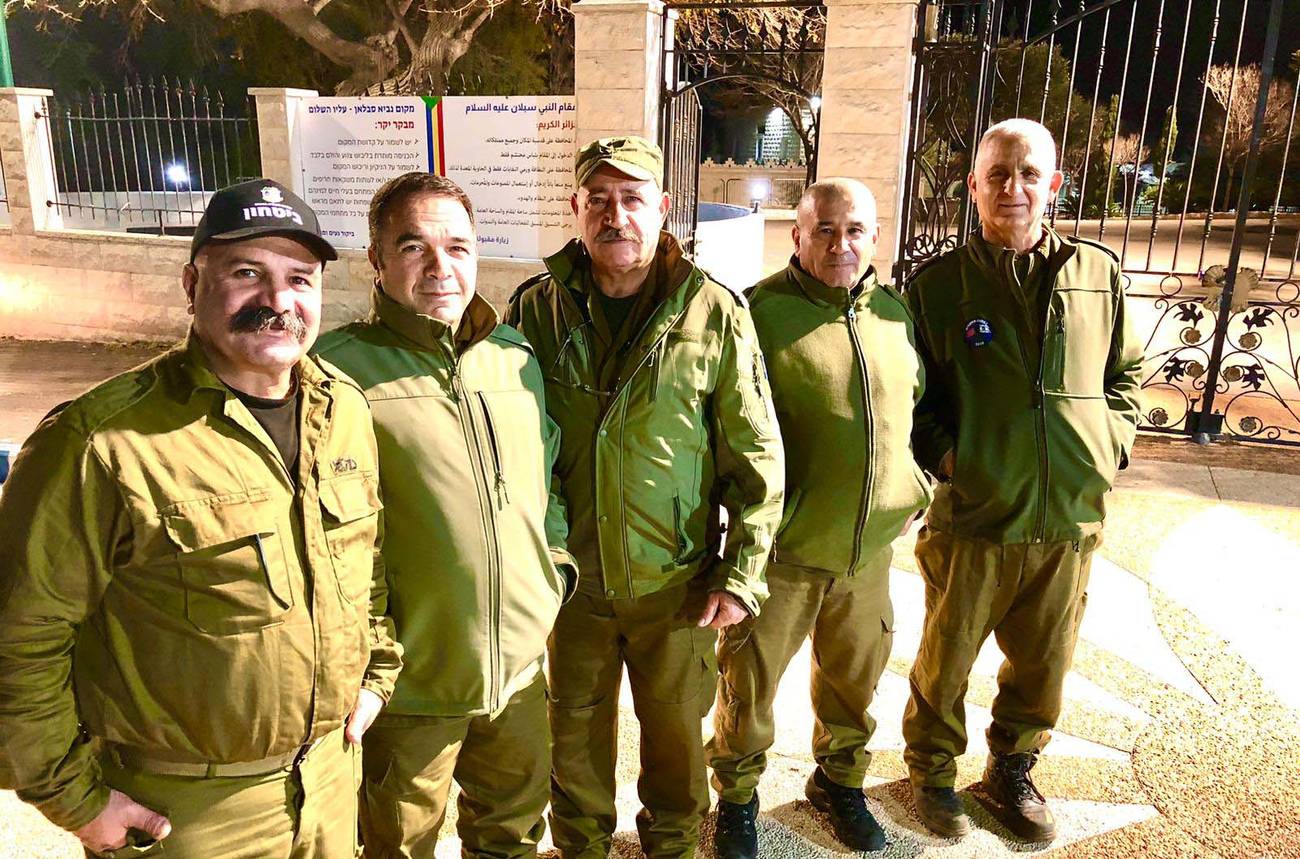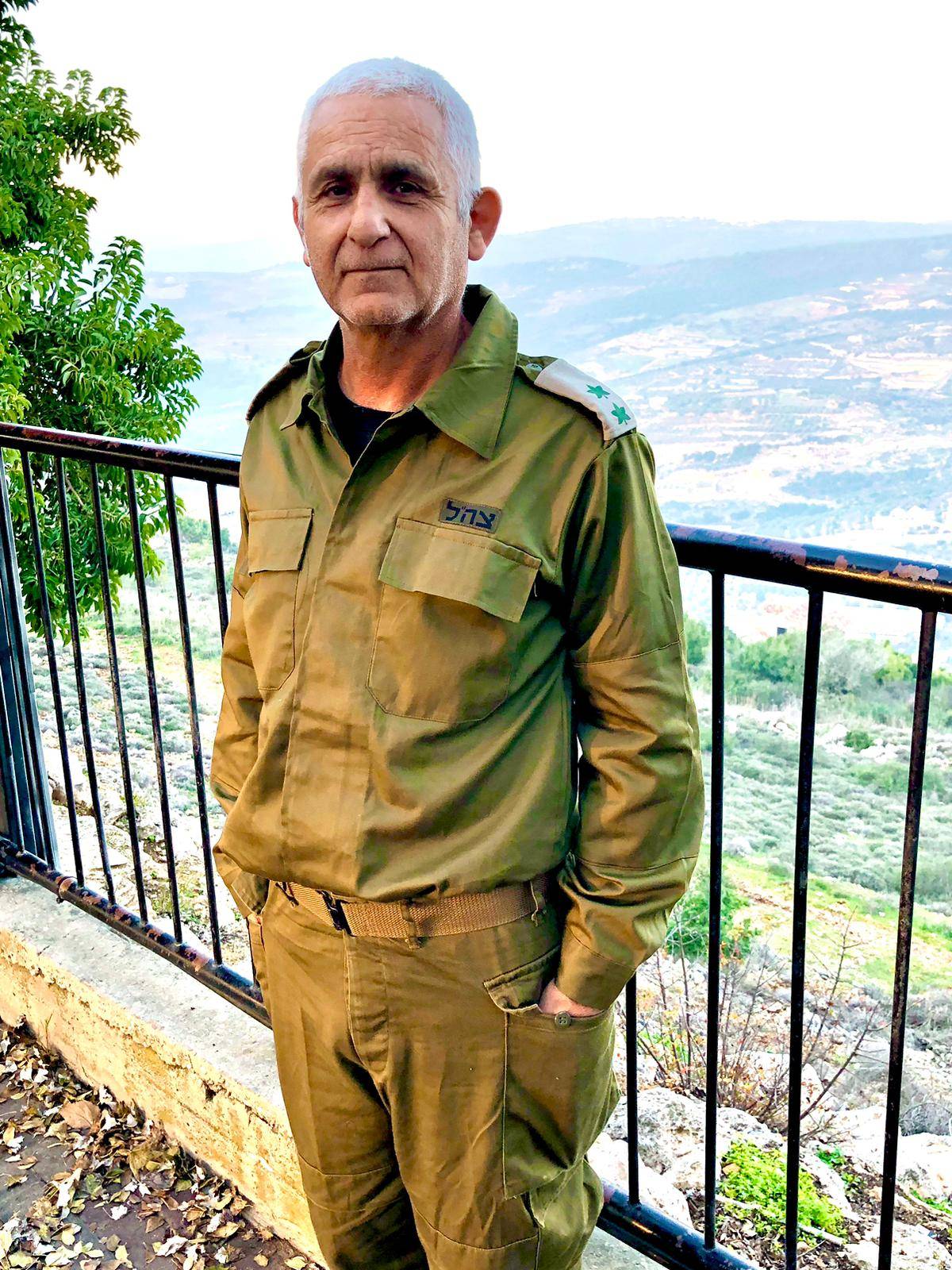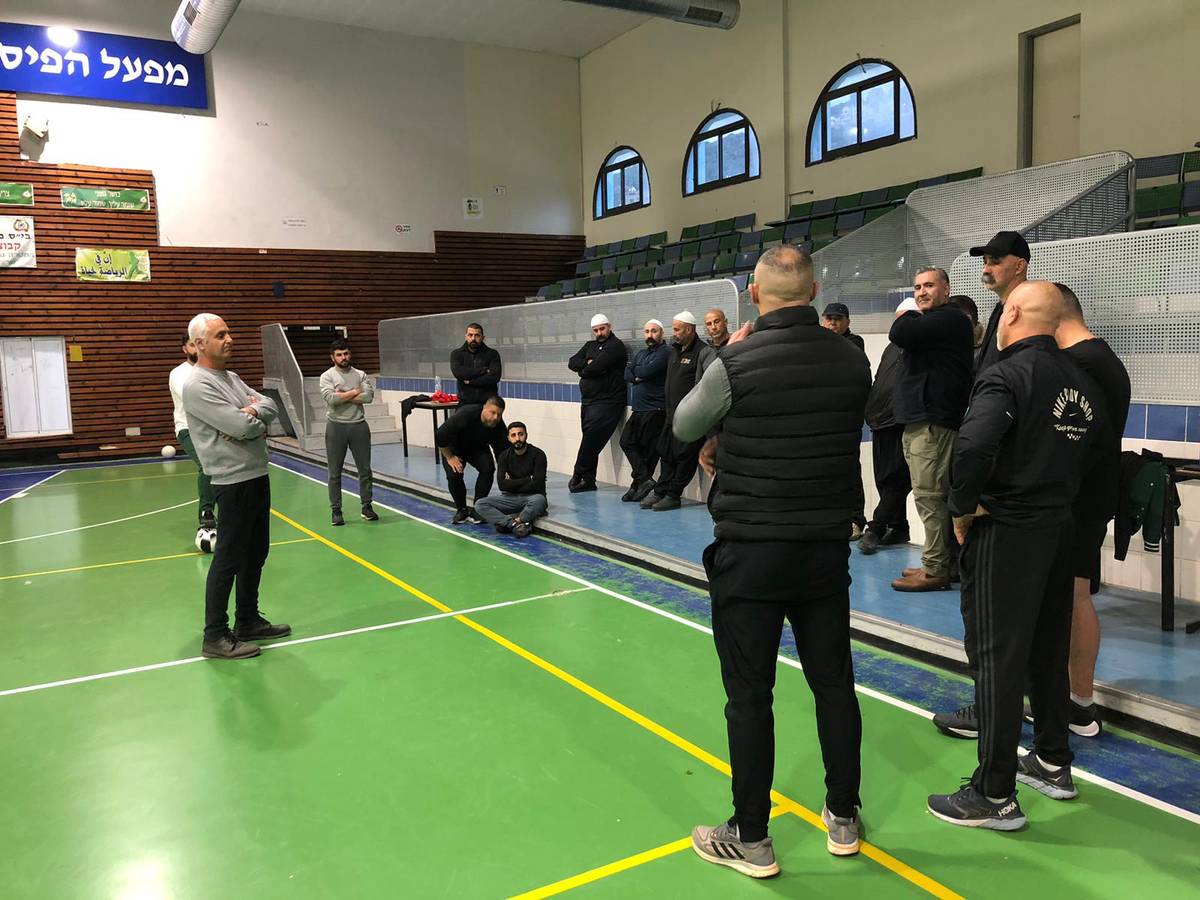Never Too Old to Fight
Even though they’re past the age of regular military service or reserve duty, Druze volunteers are Israel’s second line of defense in the north

Hillel Kuttler

Hillel Kuttler

Hillel Kuttler

Hillel Kuttler
Three men in Israel Defense Forces uniforms patrolled on Jan. 8 in Hurfeish, a Druze town of 7,000 in the Galilee, just 1 1/2 miles from the Lebanese border. The trio drove that night not in a military jeep but a Chevy Blazer bearing civilian license plates. They weren’t in active-duty service (18–21 years old) or even in reserves (through age 45), but were far older—the youngest of them being 54.
These older Druze men are in another tier of Israeli military service: kitot konenut, first-response teams for security threats. Most Israeli communities have kitot konenut, which are locally run. Like those in Hurfeish, the ones in small communities—including kibbutzim, moshavim, and villages—operate under the aegis of the IDF, while those in cities report to the national police service. The Hurfeish team comprises former combat soldiers past the age of reserve duty, along with reservists from town assigned back to Hurfeish, the idea being that a resident’s familiarity with a place and its people far exceeds an outsider’s. The post-reservists operate as volunteers.
The men making the rounds on Jan. 8 and their colleagues on other shifts conduct round-the-clock patrols in town, train in the field, and hold security briefings. Hurfeish’s security heads also meet periodically with counterparts throughout the area.
Hurfeish’s team (known by the singular term kitat konenut) reactivated itself on Oct. 8, when Hezbollah, the terrorist organization that controls southern Lebanon, attacked Israel a day after Hamas’ massacre of Jewish communities near the Gaza Strip. Hezbollah’s strikes against Israeli military and civilian targets in the north, and the IDF’s counterattacks, have occurred almost daily ever since.
Almost all residents of communities within 5 kilometers (3 miles) of the border with Lebanon were evacuated months ago by the Israeli government. Hurfeish, though, continues to function as before: its shops open, vibrant pedestrian and vehicular traffic, residents in place.
When I asked them why, everyone I interviewed in Hurfeish’s kitat konenut provided nearly the same answer.
“We didn’t want to be refugees, even temporarily,” said Falah Gadban, 60, the kitat konenut’s commander.

Hillel Kuttler
Abdo Kadi, 67, the deputy commander and, like Gadban, a lieutenant colonel, said: “We decided that in no way, shape, or form are we evacuating our town. We’ll fight to the end. Whoever tries to infiltrate or harm us or the State of Israel, we’ll stop them.”
It’s a steadfastness characterizing Druze towns that have remained put throughout Israel, and Druze culture more broadly, Kadi said: “It’s one of our bedrocks: that you don’t leave your home, your land, and your state. You have to protect it.”
The Druze are an ethnic-religious minority that split off from Islam a millennium ago. Of 1.5 million Druze worldwide, approximately 150,000 are in Israel, mostly in the Galilee (where they are Israeli citizens) and Golan Heights (where most retain Syrian citizenship). More than 500,000 Druze lived in Syria before the country’s civil war of the 2010s, but several hundred thousand are thought to have emigrated since then. Another 400,000 live in Lebanon.
In Israel, the Druze are renowned for being intensely patriotic. Within a decade of Israel’s establishment, Druze leaders persuaded Prime Minister David Ben-Gurion to extend the military draft to their group. Since then, Druze males serve in the IDF, including in elite combat units; women perform national service in schools, hospitals, and nonprofit organizations.
Most of those interviewed for this article expressed pride in Druze Israelis’ commitment to the country’s defense. Several boasted that Hurfeish has the highest percentage of officers of any community in the country—“including the Jewish sector,” Kadi said.
“We volunteered for this because of our commitment to our village, to defend our people,” said Fawzi Gadban, a 54-year-old retiree from a career as an economist with the Finance Ministry, who sat beside me on my Jan. 8 ride-along and who is related to Falah Gadban. “Here in Hurfeish, we feel the war. We hear the explosions in Lebanon. We all know that securing the village is priority No. 1, so no one complains that we have to do patrols.”
Hurfeish is extra alert these days, said members of its kitat konenut—a function of the town’s proximity to the border, and with retaliation expected for the recent assassinations in Lebanon of Hezbollah and Hamas leaders. Both killings were attributed to Israel, which neither confirmed nor denied involvement.
On a prior visit to Hurfeish in mid-December, I was approached by two men wearing IDF uniforms and driving a civilian car. They politely asked who I was and what brought me to town. Apparently, I’d aroused suspicion by taking a photograph with my cellular phone; it was of a sign memorializing Staff Sgt. Jawad Amar, 23, a Hurfeish reservist killed in a battle with Hezbollah on Oct. 9.
On my return visit in January, Kadi, untroubled by the cold wind whipping that night, pointed to lights clearly visible atop a hill in Lebanon that Google Maps on his phone showed to be precisely 14.82 km away: less than 9 miles.
That hill, he said, is Bint Jbeil, a Shiite Muslim town where Israel fought fierce battles against Hezbollah during the 2006 Second Lebanon War. Several Lebanese villages are much closer to the border, but less visible.
The previous Shabbat, Jan. 6, sirens sounded in Hurfeish and across a rectangular strip running from the border 5 miles south from Lebanon into Israel and east from the Mediterranean Sea nearly to the Sea of Galilee. In this part of the country, the alerts, which send residents running for bomb shelters and fortified rooms, tend to indicate the launch of not only Hezbollah-launched missiles but also drones—including exploding drones. Both regularly are shot down by Israel’s Iron Dome missile-defense system.
Members of Hurfeish’s kitat konenut grabbed their weapons that morning and raced to their assigned concrete posts to defend against a possible land invasion by Hezbollah.
“Why not?” Kadi said of the possibility. “Hezbollah is better armed than [Hamas]. It has tanks, arms, and much experience gained from fighting in the civil war in Syria. We see the Redwan Forces [Hezbollah’s special-operations unit] near the fence in Lebanon and getting closer.”
We were speaking at the edge of a parking lot on a hilltop known as the Shrine of the Prophet Sabalan—Zebulun, one of the 13 children of the patriarch Jacob (revered by Jews and Druze alike). Leaders of the kitat konenut often hold briefings there because of its commanding views of the region, from Rosh Hanikra in Israel’s northwestern corner to Mt. Meron and beyond to the east.
It’s the spot where, on my first December visit, I’d spoken with Falah Gadban.
Hurfeish’s kitat konenut was dormant prior to Oct. 7, its armory having been closed and most of its weapons collected by the IDF, which assessed that they weren’t needed. The situation echoed that of Gaza-area communities, whose kitot konenut fought Hamas terrorists with whatever weapons they had that day and whose valor, in many cases, prevented a more widespread massacre.
Given the IDF’s unpreparedness and failure to quickly respond to the Oct. 7 invasion, kitot konenut proved themselves to be “what’s necessary” as a second line of defense, said Rawad Amer, a 35-year-old reservist.
Amer was speaking at a high school gymnasium in Hurfeish on a Friday afternoon in December. Twenty-five fellow members of the kitat konenut had gathered for a weekly session of stretching and a game of basketball meant to keep the men fit and to build teamwork. They chatted among themselves in a mixture of Hebrew and Arabic.

Hillel Kuttler
“We saw that we have to rely on ourselves,” Amer said. “What happened in the south was a catastrophe. The kitot konenut there reduced the damage. They were the first to respond and delayed [the terrorists] until others responded. They proved the importance of kitot konenut.”
As news of the invasion spread on Oct. 7, Falah Gadban reached out on WhatsApp to the approximately 100 men in his kitat konenut to organize the town’s defense. “We had to be extra vigilant until [regular IDF] forces got here,” he said.
He divided Hurfeish geographically, assigning a handful of men to each sector and several others to support the defense of nearby Kibbutz Sasa and Moshav Elkosh if needed. The next day, the group met at the shrine, where uniforms and newly delivered weapons were distributed.
“These are people you can trust. A fighter knows the language,” he said of the Hurfeish team. “We know the lay of the land, who is Hezbollah who stands opposite us. We don’t have to open a map. That’s a huge advantage.”
He considered a question about the value of mature, battle-trained men during a crisis.
“Older people have life experience and military experience,” said Gadban, mentioning the years he fought in the first Lebanon war. “There’s a difference between this and someone under fire for the first time. … We have operational experience. Kids generally don’t understand the danger as a veteran person does.”
Hillel Kuttler, a writer and editor, can be reached at [email protected].